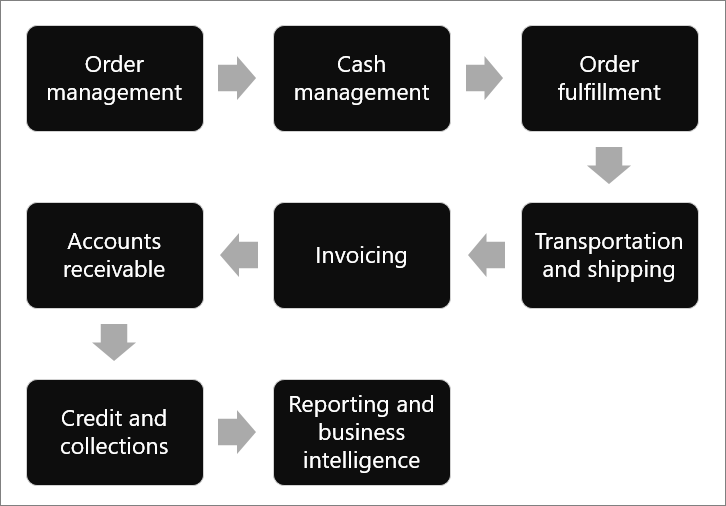Introduction - Order to cash process
The order to cash process manages the life cycle of the sales process, which consists of the sub processes of receiving and processing customer sales.

In the order to cash process, an organization receives orders through various methods, such as a website, email, electronic data interchange (EDI), telephone, and more. The orders are fulfilled through logistics and then the items might be reserved prior to being picked, packed after being picked, and shipped to the customers.
Some organizations might require contractual sales agreements to ensure that commitments are being fulfilled prior to accepting and processing sales orders. For more information about agreements, see Configure and use agreements in Dynamics 365 Supply Chain Management.
Typically, the Accounts receivable department will invoice the order and send it to the customer.
After the invoice is sent, the Accounts receivable and collection departments are responsible for ensuring that the funds are received from the customers and are settled against their corresponding invoices.
For more information about accounts receivable and collections, refer to the following modules:
Another process that occurs in an order to cash scenario is order fulfillment. This process ensures that the company has the products and services that can be shipped to the customer.
In a large organization, a planner runs master planning to create planned purchase, transfer, or production orders to fulfill the demands from the customers.
When the products are available, the sub process of distribution starts. This process is responsible for shipping and logistics to ensure that the products are picked, properly packed, and promptly shipped to the customers.
Other sub processes could be involved in an order to cash scenario, such as checking the credit limit of a customer prior to processing the order. If any issues occur, a sales agent can place the order on hold for a specific reason such as credit limit, collections-related issues, and more.
The following list of tasks shows the typical order to cash activities:
Sales quotations (optional)
Sales orders
Logistics and shipping
Sales order invoice
Collection
Receive funds
This module focuses on the following tasks:
Sales order entry
Manage order holds
Manage commissions for sales representatives
Initiate picking process
Verify that the shipment has been completed
Generate invoices
Reverse flow process
Manage customer returns
Issue credit notes
Refund customer